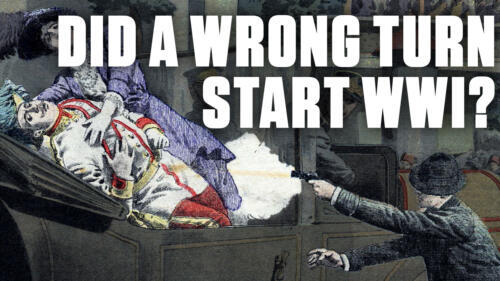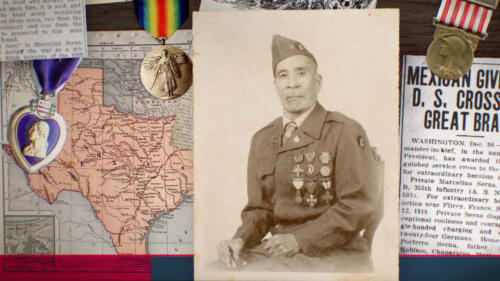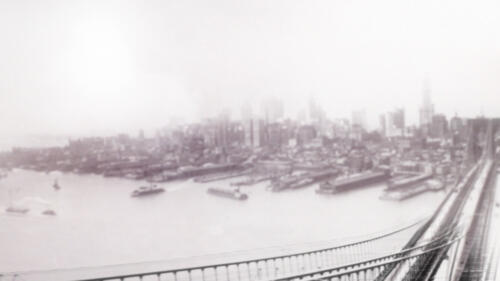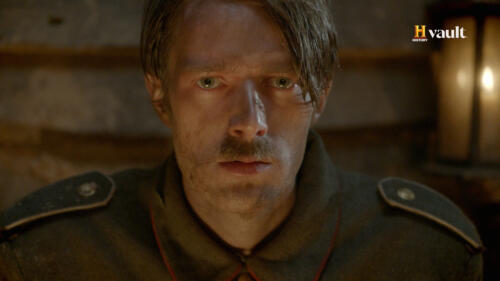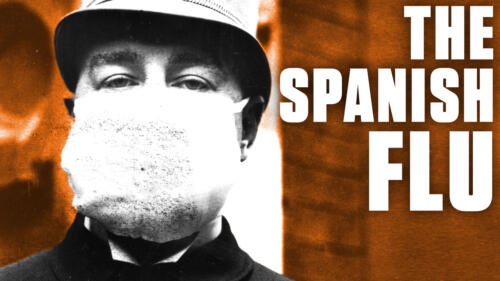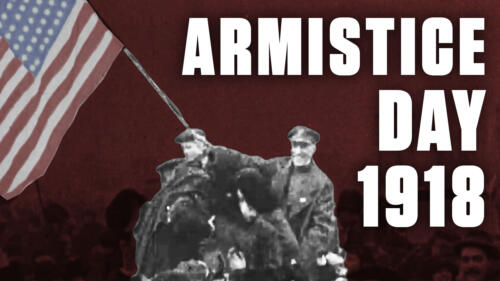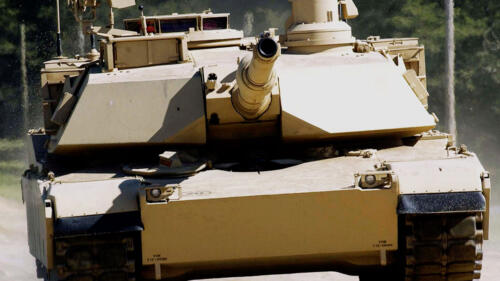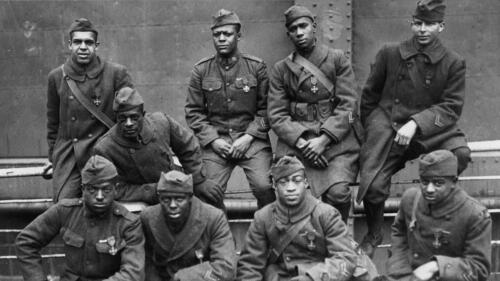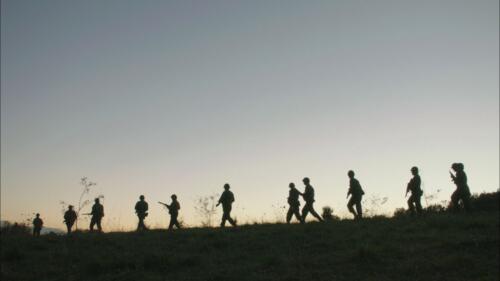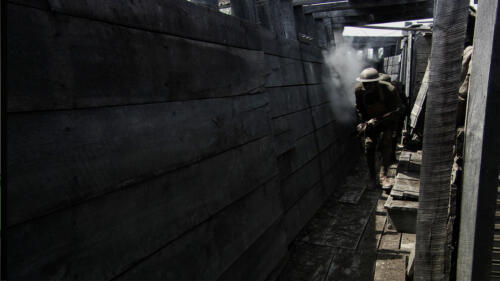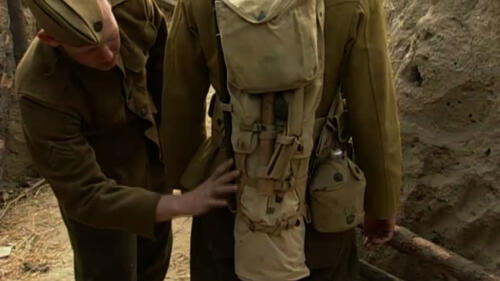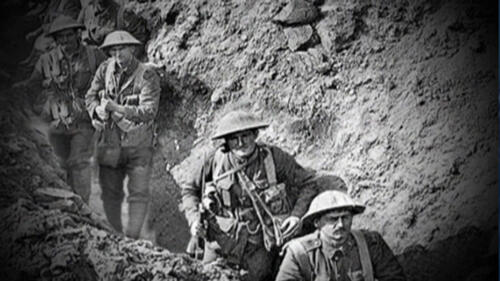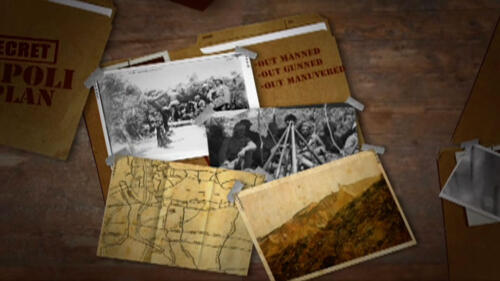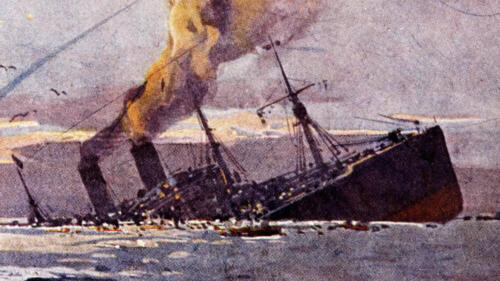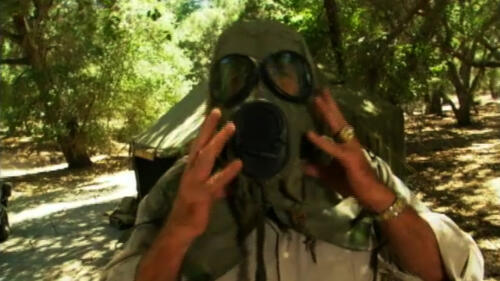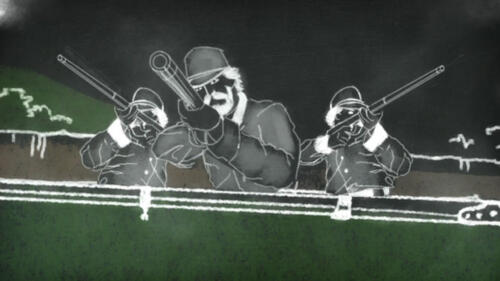World War I
World War I—also known as the Great War—pitted Germany, Austria-Hungary and the Ottoman Empire against Great Britain, the United States, France, Russia, Italy and Japan. New military technology resulted in unprecedented carnage. By the time the war was over and the Allied Powers claimed victory, more than 16 million people—soldiers and civilians alike—were dead.
Featured Overview
Archduke Ferdinand's assassination caused the outbreak of World War I, but what caused the assassination itself? It may have been something as simple as a wrong turn.
3:14m watch

Royal Engineers No 1 Printing Company/ IWM via Getty Images
Featured Overview
Archduke Ferdinand's assassination caused the outbreak of World War I, but what caused the assassination itself? It may have been something as simple as a wrong turn.
3:14m watch
Start Here

This World War I timeline of battles outlines the most important engagements of the 1914-1918 war, from the first Battle of Mons to the final 1918 armistice.

When Austria-Hungary declared war on Serbia in 1914, each of their allies quickly joined the fight.

World War I’s legacy of debt, protectionism and crippling reparations set the stage for a global economic disaster.

These World War I inventions made life easier during—and after—the war.

3 Military Technologies Deployed for the First Time in World War I
The Harlem Hellfighters
The Harlem Hellfighters
The Harlem Hellfighters were an African-American infantry unit in WWI who spent more time in combat than any other American unit. Despite their courage, sacrifice and dedication to their country, they returned home to face racism and segregation from their fellow countrymen.
6:06 watch
Explore All Related Topics
In 1997 Dr.Johan Hultin excavated an indigenous village graveyard in hopes to find the cause of Spanish flu but found much more.
3:26m watch

Here are some of the essential items that typical doughboys carried with them on the battlefields of World War I.

Some winged warriors, like the famed Cher Ami, received military honors for their intrepid feats as battlefield messengers.

Ferdinand Foch was a French military leader who served as supreme commander of the Allied armies during the final months of World War I.

Paul von Hindenburg was a significant and controversial political figure in German history who served as the second president of the Weimar Republic. While some praised him for stabilizing Germany in the wake of World War I sanctions, Hindenburg played a key role in Adolf Hitler’s rise to power.

Field Marshal Sir John French, Earl of Ypres, served as the commander in chief of the British Expeditionary Forces during World War I.

Joseph Joffre played a significant role in shaping the outcome of World War I. The commander-in-chief of the French Army became an iconic symbol of French resistance for his defense against the German invasion on the Western Front.

The carnage of the war was so extreme that historians have had difficulty agreeing on exactly how many people lost their lives.

After terrorizing trans-Atlantic ships in World War I, German U-boats grew even more fearsome in World War II.

Many of the powers in World War I were competitive in overtaking territories in Europe and Africa.

Even though airplanes were a relatively new invention, the race for air superiority started during World War I.

When Austria-Hungary declared war on Serbia in 1914, each of their allies quickly joined the fight.

The 1914 conflict dealt a defeat so devastating that it drove a Russian general to suicide.

The Germans were the first to successfully weaponize gas in World War I—to horrifying effect.

The June 1917 Allied attack involved meticulous planning, tunneling and devastating explosives.
Marcelino Serna came to the U.S. as a undocumented immigrant, and within just a few years, became one of the country's bravest heroes.
1:04m watch
After the Spanish Flu descended on New York City in 1918, its citizens did everything they could to flatten the curve.
1:03m watch
Learn about Hitler's survival during WWI.
3:05m watch

This World War I timeline of battles outlines the most important engagements of the 1914-1918 war, from the first Battle of Mons to the final 1918 armistice.

Imperialism, nationalistic pride and mutual alliances all played a part in building tensions that would erupt into war.
Learn about the use of poisonous gas during WWI.
2:07m watch

Both World War I and the 1918 influenza pandemic were devastating events in history. So why did memorials for one event overshadow the other?

After infecting millions of people worldwide, the 1918 flu strain shifted—and then stuck around.

Amid fierce controversy, public health officials in both cities decided children would be better off in classrooms.

Intended to curb the spread of tuberculosis, open-air schools grew into a major international movement in the early 1900s.

Cartoons, PSAs and streetcar signs urged Americans to follow health guidelines to keep the pandemic from spreading.

Diseases have devastated human populations, but they've also inspired social upheaval and innovations.

Once it was over, no one wanted to talk about it.

Nations fighting in World War I were reluctant to report their flu outbreaks.

Most people complied, but some resisted (or poked holes in their masks to smoke).

A lot was on the line, and not just for Democrats in Congress.

After millions perished, people turned to séances, Ouija boards and more to help communicate with their dearly departed.

Doctors first tried injecting patients with blood plasma in the early 1900s. The method has been used against diphtheria, the 1918 flu pandemic, measles and Ebola.

By the time the virus reached the U.S., the country already had a vaccine ready.

How U.S. city officials responded to the 1918 pandemic played a critical role in how many residents lived—and died.

The first strain of the 1918 flu wasn’t particularly deadly. Then it came back in the fall with a staggering death toll that eclipsed even the casualties of World War I.

Undertakers, gravediggers and casket makers couldn’t keep up with history’s deadliest pandemic.

During the first half of the 20th century, people used a variety of measures—including gargles, masks and signs—to try and avoid catching the flu.

Runners were more reliable than any other form of communication. But the role was among the war's most dangerous.

Under the Treaty of Versailles, the German emperor was supposed to be tried as a war criminal. Why wasn't he?

After the Treaty of Versailles called for punishing reparations, <br>economic collapse, the rise of Naziism, and another world war thwarted Germany's ability to pay.

Some disarmed the German military, while others stripped the defeated nation of territory, population and economic resources, and forced it to admit responsibility for the war and agree to pay reparations.
In 1918 the Spanish Flu killed at least 50 million people around the world and was the second deadliest plague in history–after, well, the plague in the 1300s. But how exactly did a flu virus cause such massive death and destruction across the world?
5:42m watch

If you can't hide from the enemy, confuse them.

Digitally colorized photographs from a century ago help bring "The Great War" to life.

The sinking of the USS San Diego was a mystery for 100 years.
On November 11, 1918, World War I finally came to an end after four-plus years of combat. Armistice Day was wildly celebrated throughout the world, and in this rare footage, we see how New York, Washington D.C. and Paris took to the streets with pure joy.
3:28m watch

The six-hour delay between the armistice signing and World War I’s official end cost the lives of nearly 3,000 soldiers, including one American in the war’s final minute.

Four days before the actual end of World War I, a false report misled the country and set off wild celebrations.

From killing rats in the trenches to locating the wounded to keeping an eye out for the enemy, dogs served loyally at the side of soldiers and medics in World War I.

Both sides had suffered too much to continue, but Germany would be left battered by harsh terms.

Over Christmas 1914, singing and soccer broke out between British and German forces.

These World War I inventions made life easier during—and after—the war.

It wasn't because of World War I.
Archduke Ferdinand's assassination caused the outbreak of World War I, but what caused the assassination itself? It may have been something as simple as a wrong turn.
3:14m watch

The seeds of the devastating conflict had been planted long before the assassination of Archduke Franz Ferdinand.

Now a multibillion-dollar, nip-and-tuck industry, modern plastic surgery arose a century ago to reconstruct the faces of soldiers disfigured on World War I battlefields.

The assassination of Franz Ferdinand might not have happened but for an odd coincidence that placed him right in front of his assassin’s gun.

Blue clouds of poisonous gas. Relentless shelling and machine gun fire. Horace Pippin's art-filled journals recorded life in ‘them lonely, cooty, muddy trenches.'

The Schlieffen Plan, devised a decade before the start of World War I, was a failed strategy for Germany to win World War I.

The Battle of the Somme was one of the largest battles of World War I, and among the bloodiest in all of human history.

World War I altered the world for decades, and writers and poets reflected that shift in literature, novels and poetry.

The very existence of the V.A.—which began in 1930—marked a change in how Americans perceived the people who fought its wars.

Trenches—long, deep ditches dug as protective defenses—are most often associated with World War I, and the results of trench warfare in that conflict were hellish indeed.

A German U-boat torpedoed the British-owned steamship Lusitania, killing 1,195 people including 128 Americans, on May 7, 1915. The disaster set off a chain of events that led to the U.S. entering World War I.

The causes of World War I have been debated since it ended—but the assassination of Archduke Franz Ferdinand was an early catalyst.

How a secret team of British divers hunted codes from German shipwrecks.
Check out six fun facts about the history of tanks.
0:39m watch

See the heroes of the 1918 Spanish flu pandemic in color.

The League of Nations, a global diplomatic group developed after World War I to solve disputes before they erupted into open warfare, had failed by 1940.

The United States entered World War I in 1917, following the sinking of the British ocean liner Lusitania and the shocking discovery of the Zimmermann telegram.

These five pooches are living proof that dogs truly are a man’s best friend.

The explosive document helped speed America’s entry into World War I.

It was a century ago that a staple of modern warfare—the tank—first made its combat debut at the Battle of the Somme.

Manfred von Richthofen—better known as the “Red Baron”—was the top scoring flying ace of World War I, with 80 aerial victories between September 1916 and his death in April 1918.

Once Europe’s most prominent striptease performer, Dutch dancer Mata Hari was executed by a French firing squad after she was found guilty of spying for the Germans during World War I.

An explosion that initially looked like an accident, turned out to be an act of sabotage.

Explore 10 surprising facts about the bloodiest encounter of World War I.

There are a number of theories, including ones that involve dust and clay.

Explore 10 surprising facts about one of the longest and most brutal campaigns of World War I.

Explore eight of the most famous chroniclers of the “War to End All Wars.”

The 1918 influenza pandemic did not, as many people believed, originate in Spain.

Private Henry Johnson, a member of the renowned all-Black unit, fought off nearly two dozen German soldiers during World War I.

Learn the stories behind eight of history’s most outside-the-box wartime cutbacks.

Get the story behind the ill-fated British ocean liner.

Get the facts on the epic World War I struggle.

Look back at the moment when the holiday spirit sparked impromptu ceasefires along World War I’s Western Front.
In the years leading up to WWI, a series of agreements between the powers of Europe helped determine where and when battlelines were drawn.
2:47m watch

Look back at the bloody fight that saved Paris and changed the course of World War I.
The Harlem Hellfighters were an African-American infantry unit in WWI who spent more time in combat than any other American unit. Despite their courage, sacrifice and dedication to their country, they returned home to face racism and segregation from their fellow countrymen.
6:06m watch

On the eve of the assassination’s centennial, find out how a teenage Serbian nationalist provided the spark for World War I.

Before London was blitzed in World War II, massive German zeppelins rained bombs and terror upon the British capital in World War I.

During both World Wars, America's agricultural production became a powerful military tool.
A look back at the legacy of World War I nearly 100 years after the conflict began.
2:29m watch

World War I Following nearly three years of intense combat since the onset of World War I, America’s allies in Europe were facing starvation. Farms had either been transformed into battlefields or had been left to languish as agricultural workers were forced into warfare, and disruptions in transportation made the distribution of imported food extremely […]

Along with several other English colonies, Australia and New Zealand entered World War I shortly after the British Empire declared war on Germany in August 1914. Aussies and Kiwis volunteered to serve by the thousands, and most were shipped to Egypt for training in late 1914. The combined Oceanic force was originally known as the […]

An art historian is leading a campaign to catalogue, and hopefully preserve, America’s World War I memorials.

From a balloon-busting fighter ace and a Navy escape artist to one of the Marine Corps’ most legendary sergeants, meet six servicemen who distinguished themselves on the battlefields of World War I.
These deadly German submarines dominated the waters in both WWI and WWII.
1:59m watch

The skies over World War I-era Europe served as a brutal testing ground for manned aircraft. Though limited by their primitive machines, these “Knights of the Sky” went on to achieve some of the war’s most extraordinary—and often downright suicidal—feats of heroism. Get the facts on six of the Great War’s most celebrated airborne daredevils.
Thousands of miles of trenches were built during World War I and, for the soldiers living in them, their day-to-day life was nothing short of horrific.
3:14m watch

Most historians agree that American involvement in World War I was inevitable by early 1917, but the march to war was no doubt accelerated by a notorious letter penned by German foreign secretary Arthur Zimmermann. On January 16, 1917, British code breakers intercepted an encrypted message from Zimmermann intended for Heinrich von Eckardt, the German […]
Did you know that the first-ever tanks, chemical weapons and blood banks were introduced during World War I? Get all the facts behind the conflict known as the "war to end all wars."
2:15m watch

The short answer is no, though it’s hard to pinpoint precisely when the World War I and World War II—or First World War and Second World War—monikers arose. During World War I, of course, nobody knew that a second global conflict would follow closely on the heels of the first, so there was no need […]
In a Mail Call video, R. Lee Ermey answers a question from Mark of Kansas who wants to know what was in a World War I backpack. Ermey reveals that on top of all the other hardships WWI soldiers had to endure, their backpacks proved to be another annoyance. Men from the Great War Historical Society strapped on the WWI packs and completed some drills; by the end, they definitely felt the WWI soldiers pain. The bottom section of the backpack, known as the diaper, was detachable and carried the soldiers blanket, shelter half, and shelter half pole and pins. On the belt youd find ammo, a first aid kit, a canteen cover, and a canteen and cup. Inside the flaps were a baking tin, a condiment can, and boxes of bread rations. Also inside the flaps were a towel, soap dish, shaving kit, handkerchief, foot powder, and extra socks. Attached to the outside were the bayonet, shovel, trenching tool, and a mess kit. The entire weight of the pack lies entirely on the soldiers shoulders, making it very uncomfortable. If a soldier wanted to get anything out of his pack, he would have to stop, unravel everything, get what he needs, and then pack everything back up. Due to the placement of the bayonet, most soldiers would have to have a buddy put it back for them.
2:00m watch
After two years of trench warfare, the Allies attempt to break through German lines on the Western Front. The ensuing battle will last for months and result in more than one million casualties.
1:36m watch
An ill-fated assault on Turkish forces leads to 500,000 casualties in World War I.
1:38m watch
After the repeated sinking of American ships, the President declares war. Historic film footage shows some of the first naval battles.
2:27m watch
When Germany torpedoes a British passenger ship believed to be smuggling arms, anger at the resulting American deaths increases pressure on President Wilson to enter World War I.
2:04m watch
In this video clip of History's Mail Call, host R. Lee Ermey takes a look at how gasmasks work and explains why those sold in surplus stores are not worth the money. Military gasmasks will save your life if they are made and worn properly. When poisonous fumes enter the mask it passes through a filter with a dense layer of carbon and thick padded air cleaner. It is then cleaned and provides fresh air to the soldier or person wearing the mask.
3:32m watch
German resentment over harsh peace terms leads to a rise in nationalist sentiment and the eventual rise to power of Adolf Hitler.
1:56m watch
Although best known for its role in the long slog of World War I, trench warfare actually got its start on the battlefields of the American Civil War. Find out how new weapons and technology played a part in both its development and destruction.
1:15m watch

Claude Choules, a resident of Australia who also served during World War II, died Thursday at 110.

The Spanish flu pandemic of 1918, the deadliest in history, infected an estimated 500 million people worldwide—about one-third of the planet’s population—and killed an estimated 20 million to 50 million victims, including some 675,000 Americans.

The Armenian genocide was the systematic killing and deportation of millions of Armenians by Ottoman Empire Turks from 1915-1920, during and after World War I.

Wilhelm II (1859-1941) was the last German kaiser (emperor) and king of Prussia from 1888 to 1918, and one of the most recognizable public figures of World War I (1914-18). He gained a reputation as a swaggering militarist through his speeches and ill-advised newspaper interviews.

On May 7, 1915, less than a year after World War I (1914-18) began in Europe, a German U-boat torpedoed and sank the RMS Lusitania, a British ocean liner en route from New York to Liverpool, England. More than 1,100 crew and passengers died, including more than 120 Americans.

The Battle of the Somme was a deadly Allied offensive against German forces along the Western Front of World War I, near the Somme River in France.

Who was the Red Baron? Baron Manfred von Richthofen was born on May 2, 1892, into an affluent family of Prussian nobles in what is now Poland. He enjoyed a privileged upbringing and spent his youth hunting and playing sports before being enrolled in mil...

In the Gallipoli Campaign of World War I, British, French, Australian and New Zealand troops failed to take the Gallipoli Peninsula from German-Turkish forces.

Dardanelles Campaign: Background As the only waterway between the Black Sea in the east and the Mediterranean Sea in the west, the Dardanelles was a much-contested area from the beginning of World War I. The stakes for both sides were high: British cont...

The Treaties of Brest-Litovsk was a seires of treaties Russia signed with the Central Powers ending its participation in WWI.

This World War I siege stemmed from German General Erich von Falkenhayn’s edict to elicit major bloodshed from the French defense of the fortress complex around Verdun. German forces advanced quickly in February 1916, claiming Fort Douaumont and Fort Va...

World War I started in 1914, after the assassination of Archduke Franz Ferdinand, and ended in 1918. During the conflict, Germany, Austria-Hungary, Bulgaria and the Ottoman Empire (the Central Powers) fought against Great Britain, France, Russia, Italy, Romania, Japan and the United States (the Allied Powers). World War I saw unprecedented levels of carnage and destruction due to new military technologies and the horrors of trench warfare.

The Treaty of Versailles was signed in 1919 and set harsh terms for Germany’s surrender to Allied powers after World War I, setting the stage for World War II.

U.S. Army general John J. Pershing (1860-1948) commanded the American Expeditionary Force (AEF) in Europe during World War I. The president and first captain of the West Point class of 1886, he served in the Spanish- and Philippine-American Wars and was tasked to lead a punitive raid against the Mexican revolutionary Pancho Villa.

Erich Ludendorff was a prominent general and war hero who played a crucial role in shaping and overhauling Germany’s World War I tactics. His innovative approaches to modern warfare left a lasting impression, but controversy surrounds him due to his association with Adolf Hitler and his support of the Nazi Party.
